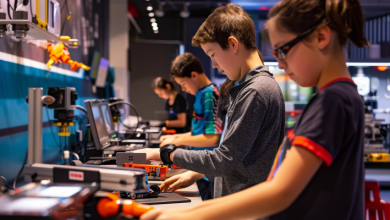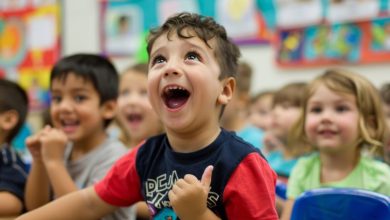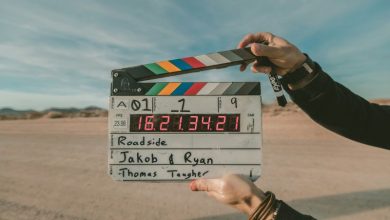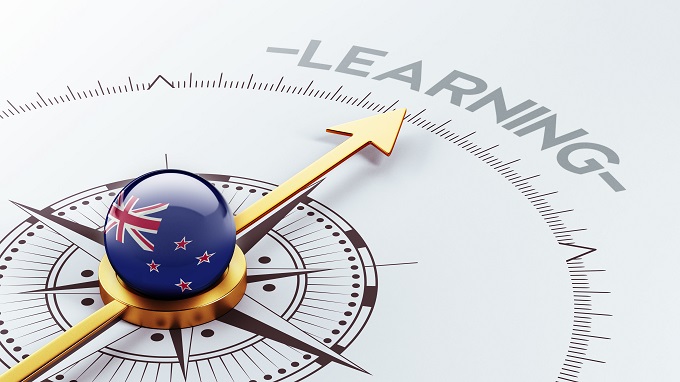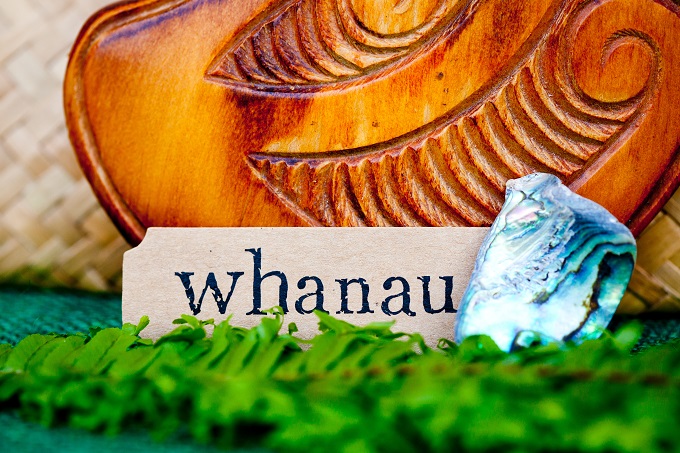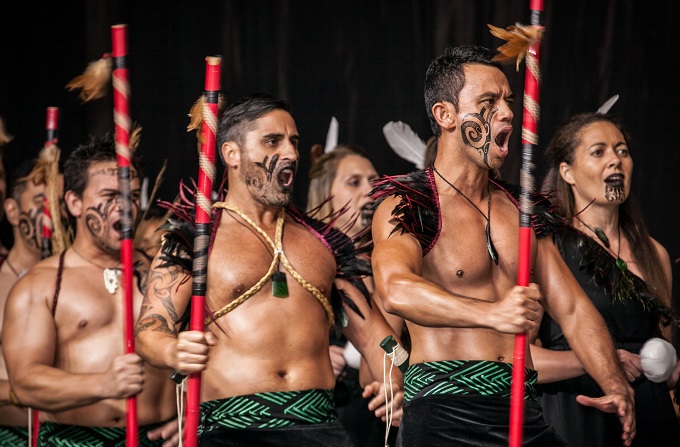Affirming Māori students as Māori: Kapa haka in mainstream schools
Tēnā koutou katoa. He uri nō Koterana e mihi nei. Ko Benechie te maunga. Ko Dee te awa. Ko North te moana. Engari, he Māori āku tamariki, nō Ngāti Awa. Aku taura here ki te kaupapa o te reo Māori me te mātauranga Māori ko rātou ko āku mokopuna. Ko Alice Patrick tōku ingoa.
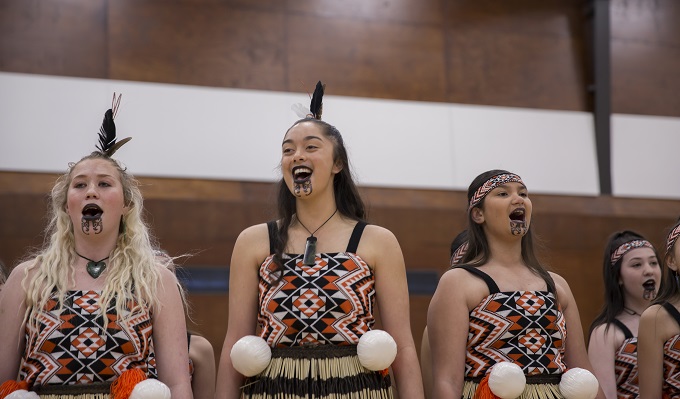
In many of our mainstream schools, kapa haka[1] thrives – and is popular with students from diverse cultures. The large number of students involved is a measure of its success. Kapa haka provides a learning environment that celebrates Māori culture and what it means to be Māori. It represents he taonga tuku iho i.e. something that is handed down inter-generationally – to be valued and treasured.
It is a vehicle to appreciate te reo Māori me ōna tikanga, contributing to the retention and revitalisation of the language and its associated culture. At the same time, students are learning life skills, by having to demonstrate commitment and self-discipline. There are cognitive and physical benefits too – in terms of memorisation and coordination. Students also benefit from the values associated with being part of a group e.g. whakawhanaungatanga (building relationships), manaakitanga (looking after each other) and aroha (love).
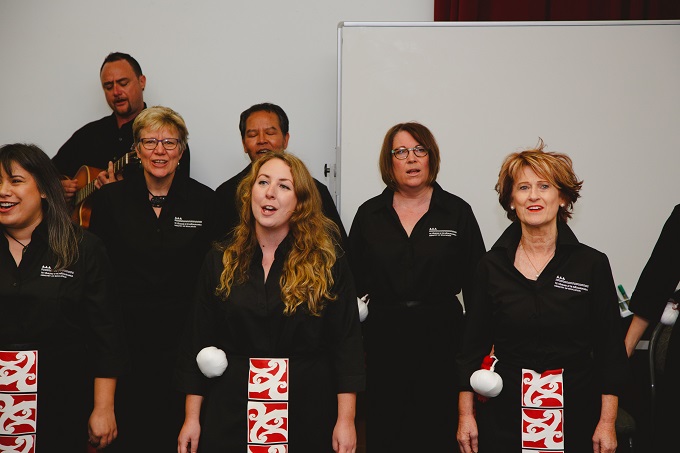
Benefits for Māori students
In her Master’s research exploring the effect of kapa haka on Māori students, Rubie[2] found that there were multiple benefits for those involved in kapa haka; namely:
- increased knowledge of their language, culture, and heritage (including ngā reo ā-iwi i.e. regional variations of te reo Māori)
- improved confidence and self esteem
- enhanced motivation for learning (including reading, writing and visual language through action songs and haka)
- more positive feelings about school life
- improved results in standardised tests.
Similarly, doctoral research by Paul Whitinui[3], looking at the educational benefits for Māori secondary school students involved in kapa haka, concluded that such involvement had a positive effect on their participation and achievement at school. They were happier to attend school and were more disposed to learning. Whitinui found that kapa haka validated their culture, boosted their confidence, nurtured their identity, and instilled pride in being Māori.
More recently, in 2014, the Ministry for Culture and Heritage commissioned research into the benefits of kapa haka[4]. The findings showed a link between students’ participation in kapa haka and improved learning outcomes – as highlighted in the following quote from one interviewee:
“… it’s huge in terms of kids at school that get involved in kapa haka…They tend to study well, they tend to achieve well. So the parts of their own culture that are supported at school gives good outcomes in terms of their scholastic results”.
Another interviewee believed that kapa haka aided literacy:
“In terms of the value of kapa haka in schools, I very much see the impact on Māori student achievement aligning with kapa haka … even improving literacy …”.
And yet another interviewee emphasised the value of kapa haka for Māori students’ identity:
“I know particularly the power of kapa haka and I’ve seen what kapa haka can do in a school. I think that we underestimate how important it is. When you have kapa haka in a school you raise the value of what it is to be Māori. So, when you have kapa haka that’s inclusive and it involves everybody, it makes the Māori children in the school feel proud about who they are and they can stand tall as Māori. There is a lot of value around being successful as Māori, and for schools to have the responsibility to make it safe to do that; kapa haka is very much a tool that allows that to happen”.
Such research is significant in light of too many Māori students becoming disengaged from formal education before the age of 16.
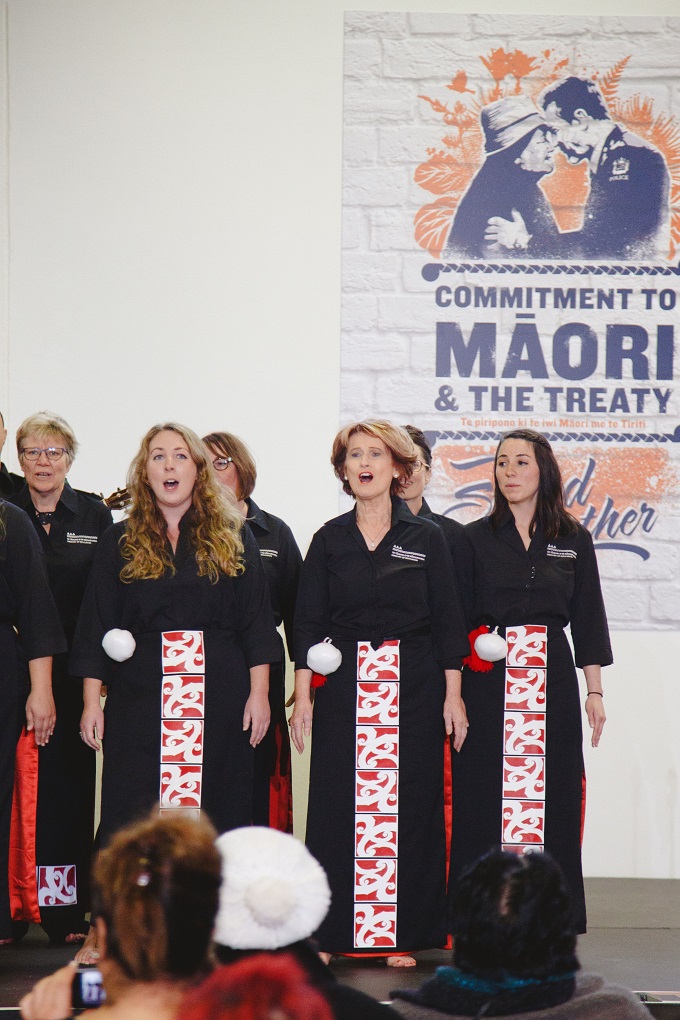
Interestingly, Christchurch Men’s Prison Youth Unit has recently introduced kapa haka training as part of its re-integration programme. The aim is to improve the young offenders’ understanding of Māori culture. The inmates report that, in addition to learning about Māoritanga, the programme has provided a positive mechanism for them to re-assess their values e.g. respect, honesty, aroha. Kapa haka has reportedly helped them to understand themselves better. One inmate, Jay, commented on the importance of tikanga in kapa haka[5]:
“Doing tikanga has opened up my spiritual being. Tikanga teach you how to behave; they are a way of life. I am going to take these learnings and use them to stay out of trouble”.
One of the tutors commented that the prison’s kapa haka programme was empowering. It promoted confidence, self-esteem, and discipline – and required teamwork. The prison is currently developing a peer mentoring system (tuakana:teina) – to accommodate newcomers to the programme.
Māori educationalist, Dr Mason Durie, emphasised that the logical mechanism for keeping young Māori engaged as learners was for their language and culture to be validated – thus giving them a strong sense of identity. In 2001, he proposed a Māori Education Framework that was adopted by the Ministry of Education (MOE). One of its three main goals to ensure Māori educational advancement was “enabling Māori to live as Māori”.
The last two words are significant, hence their prominence in subsequent ministry documents – particularly Ka Hikitia, the ministry’s Māori education strategy, which recognises that culture counts. Durie (2003)[6] defined the phrase ‘as Māori’ as follows:
“‘As Māori’ [means] being able to have access to te ao Māori, the Māori world – access to language, culture … . If, after twelve or so years of formal education, a Māori youth were totally unprepared to interact within te ao Māori, then, no matter what else had been learned, education would have been incomplete”.
Creating opportunities for kapa haka is one way that schools can increase their cultural responsiveness to Māori students – so that their language and culture is validated. Furthermore, as highlighted in the research, there will be other associated benefits. These include:
- the recognition that, as Māori, they add value to New Zealand’s unique identity
- the embedding of Māori values (e.g. whanaungatanga, ako, tuakana:teina)
- increased confidence gained from ‘performance’
- an appreciation of the different dimensions that contribute to holistic well-being (hauora)
- an enhanced ability to communicate meaning through visual language eg action songs and haka
- physical stamina, fitness and coordination
- cognitive stimulation due to the demands of recitation, repetition and memorisation
- a sense of solidarity from being in a collective, as part of a team
- self-discipline and commitment
- exposure to leadership opportunities and role-modelling
- personal growth and development.
(Alice Patrick will continue her kōrero on the benefits of kapa haka in our next edition of School News.)
Kapa haka
Commands
Kia rite! Get ready!
Hope! Hands on hips!
Kia mau! Hold/ Be ready!
Tukua! Let go! ie release hands from hips
Ki raro! Hands drop down by your sides!
Waewae takahia! Stamp your feet!
Anō! (Do/Say it) again!
Whakapiri! Come together!
Kia wiri! Quiver hands! (like the shimmer of heat on the land)
Nekehia ki te taha māui/matau! Move to the left/right!
Pūkana! Make a facial gesture with big scary eyes!
Ringaringa ki runga/raro/waho! Hands up/down/out!
Ringaringa/Waewae ki te taha māui! Hands/Feet to the left!
Ringaringa/Waewae ki te taha matau! Hands/Feet to the right!
Whiua ō ringaringa! Sway your hands!
Me mahi pēnei! Do it like this!
Haere ki muri! Go to the back!
Haere mai ki mua! Come to the front!
Āta whakarongo! Listen carefully!
Turituri! Quiet!
Whakarārangihia! Line up!
Waiata mai! Sing (to me)!
Titiro mai! Look this way/ Look at me!
Kia tau! Settle down/Stop!
Huri mai! Turn this way/Turn towards me!
Kāti! That’s enough/Stop!
Praise
Tino pai. Very good.
Ka pai. Good.
Ka mau te wehi. Awesome.
Mīharo. Amazing.
Ataahua. Beautiful.
Encouragement
Haere tonu. Keep going.
Kia kaha. Give it heaps.
[1] The word ‘kapa’ literally means to stand in a row. Most dictionaries define the word ‘haka’ as a (posture) dance. Kapa haka includes waiata, poi and haka. Many cultural groups also incorporate mau rākau (traditional weaponry) and taonga puoro (traditional Māori music).
[2] Rubie, C. (1999). The effect of a Māori cultural group experience on children’s self-esteem, locus of control and academic performance. Unpublished Master’s thesis. University of Auckland, NZ.
[3] Whitinui, P. (2007). The indigenous factor: Exploring kapa haka as a culturally responsive learning environment in mainstream secondary schools. University of Auckland, NZ.
[4] Ngā Hua a Tāne Rore (2014)
[5] www.corrections.govt.nz/news/latest_news/new_prison_kapa_haka…
[6] Ngā Kahui Pou: Launching Māori Futures. Huia Publications


